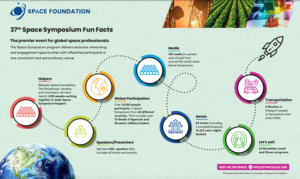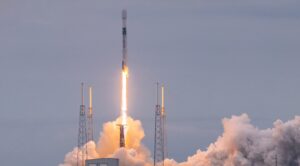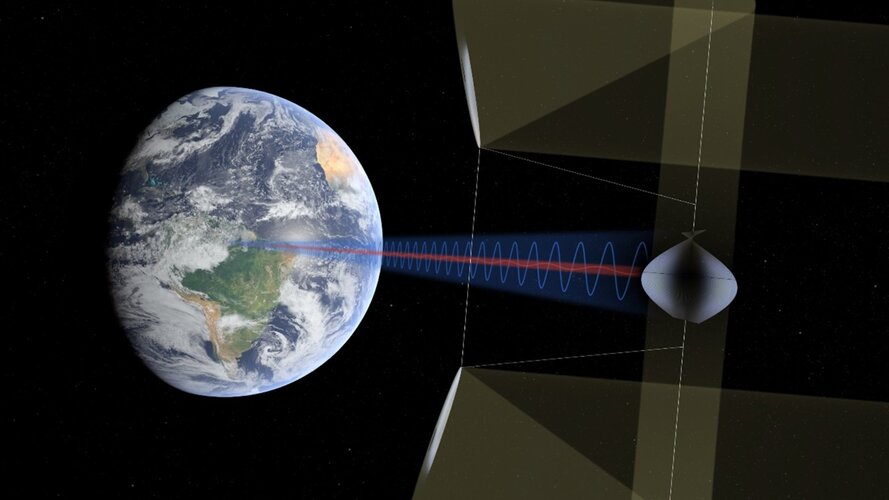Magma makes marsquakes rock Red Planet
Sunday, 03 April 2022 04:10 Volcanic activity beneath the surface of Mars could be responsible for triggering repetitive marsquakes, which are similar to earthquakes, in a specific region of the Red Planet, researchers from The Australian National University (ANU) suggest.
New research published in Nature Communications shows scientists from ANU and the Chinese Academy of Sciences in Beijing have discovered 47 previo
Volcanic activity beneath the surface of Mars could be responsible for triggering repetitive marsquakes, which are similar to earthquakes, in a specific region of the Red Planet, researchers from The Australian National University (ANU) suggest.
New research published in Nature Communications shows scientists from ANU and the Chinese Academy of Sciences in Beijing have discovered 47 previo NASA's Perseverance rover listens in the thin Martian atmosphere
Sunday, 03 April 2022 04:10 Mars has a very thin atmosphere, which at the surface has a density approximately one percent that of Earth's. Until recently, it was unclear whether there is anything to hear in the barren landscape there and if it is even possible for sound to be recorded under these conditions. When NASA's Perseverance Mars rover landed on the Red Planet on 18 February 2021, it was carrying two microphones.
Mars has a very thin atmosphere, which at the surface has a density approximately one percent that of Earth's. Until recently, it was unclear whether there is anything to hear in the barren landscape there and if it is even possible for sound to be recorded under these conditions. When NASA's Perseverance Mars rover landed on the Red Planet on 18 February 2021, it was carrying two microphones. Making Tracks to the Delta
Sunday, 03 April 2022 04:10 Perseverance is in a drive campaign going faster than any previous rover. How fast, you may ask? Its actual speed is just under a tenth of a mile per hour, but it's faster than its predecessors. It is making comparatively rapid progress by devoting several hours per day to driving on very smooth terrain.
That has allowed Perseverance to break previous rovers' records for the distance trave
Perseverance is in a drive campaign going faster than any previous rover. How fast, you may ask? Its actual speed is just under a tenth of a mile per hour, but it's faster than its predecessors. It is making comparatively rapid progress by devoting several hours per day to driving on very smooth terrain.
That has allowed Perseverance to break previous rovers' records for the distance trave NASA simulator helps to shed light on mysteries of Solar System
Sunday, 03 April 2022 04:10 Even in our cosmic backyard, the Solar System, many questions remain open. On Venus there are formations similar to volcanoes, but it is not known if they are active. The surface of Mars suggests that there was once a vast ocean, but how it disappeared remains unclear. On the other hand, recent detections of chemical compounds that may indicate the presence of biological activity on Mars and Ven
Even in our cosmic backyard, the Solar System, many questions remain open. On Venus there are formations similar to volcanoes, but it is not known if they are active. The surface of Mars suggests that there was once a vast ocean, but how it disappeared remains unclear. On the other hand, recent detections of chemical compounds that may indicate the presence of biological activity on Mars and Ven Kepler telescope delivers new planetary discovery from the grave
Sunday, 03 April 2022 04:10 A new study by an international team of astrophysicists, led by the Jodrell Bank Centre for Astrophysics has presented the amazing new discovery of a near-identical twin of Jupiter orbiting a star at a colossal distance of 17,000 light years from Earth.
The exoplanet, K2-2016-BLG-0005Lb, is almost identical to Jupiter in terms of its mass and its distance from its sun was discovered using
A new study by an international team of astrophysicists, led by the Jodrell Bank Centre for Astrophysics has presented the amazing new discovery of a near-identical twin of Jupiter orbiting a star at a colossal distance of 17,000 light years from Earth.
The exoplanet, K2-2016-BLG-0005Lb, is almost identical to Jupiter in terms of its mass and its distance from its sun was discovered using 37th Space Symposium attendance to top 10,000
Saturday, 02 April 2022 16:02
More than 10,000 people are expected to attend the 37th Space Symposium in person at the Broadmoor Hotel in Colorado Springs and online through a virtual platform.
The post 37th Space Symposium attendance to top 10,000 appeared first on SpaceNews.
Rocket Lab launches BlackSky satellites as it prepares for mid-air booster recovery
Saturday, 02 April 2022 14:45
A Rocket Lab Electron launched another pair of imaging satellites for BlackSky April 2 as the company gears up to attempt recovery of the rocket’s first stage.
The post Rocket Lab launches BlackSky satellites as it prepares for mid-air booster recovery appeared first on SpaceNews.
SpaceX launches Transporter-4 rideshare mission from Florida
Friday, 01 April 2022 23:46 SpaceX launched its 12th rocket of the year Friday afternoon, in spite of gloomy weather.
The two-stage Falcon 9 rocket blasted off on time at 12:25 p.m. EDT from Space Launch Complex 40 Cape Canaveral Space Force Station, Fla., carrying dozens of small satellites into space as part of the company's fourth dedicated rideshare mission.
About 9 minutes after the rocket launched, th
SpaceX launched its 12th rocket of the year Friday afternoon, in spite of gloomy weather.
The two-stage Falcon 9 rocket blasted off on time at 12:25 p.m. EDT from Space Launch Complex 40 Cape Canaveral Space Force Station, Fla., carrying dozens of small satellites into space as part of the company's fourth dedicated rideshare mission.
About 9 minutes after the rocket launched, th Mars' thin atmosphere means quieter sounds, new data shows
Friday, 01 April 2022 23:46 Data from NASA's Perseverance Rover has given scientists their first clear picture of how sound travels on Mars' surface.
The Red Planet's thin, cold atmosphere, made of mostly carbon dioxide, causes sound to move slower and carry for shorter distances compared to those on Earth. An international team of scientists led by Sylvestre Maurice, an astrophysicist at the University of Toulous
Data from NASA's Perseverance Rover has given scientists their first clear picture of how sound travels on Mars' surface.
The Red Planet's thin, cold atmosphere, made of mostly carbon dioxide, causes sound to move slower and carry for shorter distances compared to those on Earth. An international team of scientists led by Sylvestre Maurice, an astrophysicist at the University of Toulous SpaceX to test-fire rocket ahead of Axiom-1 private astronaut mission
Friday, 01 April 2022 23:46 SpaceX plans to test-fire a Falcon 9 rocket on Monday ahead of its first private astronaut mission, Axiom-1, to the International Space Station.
The test, dubbed a static fire test, is a routine part of prelaunch procedures.
All nine of the Falcon's Merlin 1D engines will briefly fire up as the rocket is held firmly to the launch pad. The ignition will enable engineers to ensure
SpaceX plans to test-fire a Falcon 9 rocket on Monday ahead of its first private astronaut mission, Axiom-1, to the International Space Station.
The test, dubbed a static fire test, is a routine part of prelaunch procedures.
All nine of the Falcon's Merlin 1D engines will briefly fire up as the rocket is held firmly to the launch pad. The ignition will enable engineers to ensure SpaceX launches fourth dedicated rideshare mission
Friday, 01 April 2022 22:00
SpaceX launched the fourth in its series of dedicated rideshare missions April 1, placing one relatively large satellite and dozens of smallsats into low Earth orbit.
The post SpaceX launches fourth dedicated rideshare mission appeared first on SpaceNews.
NASA begins critical final test on mega Moon rocket
Friday, 01 April 2022 16:38
NASA on Friday begins a critical two-day-long test of its giant Space Launch System (SLS) rocket complete with a mock countdown, as the agency gears up to return humans to the Moon.
Known as the "wet dress rehearsal," it is the final major test before the Artemis-1 mission this summer: an uncrewed lunar flight that will eventually be followed by boots on the ground, likely no sooner than 2026.
"It is our last design verification prior to our launch," senior NASA official Tom Whitmeyer said in a call with reporters this week.
Miniaturized laser systems to seek out traces of life in space
Friday, 01 April 2022 16:36
Was there life on Mars? This is the question that the European Space Agency (ESA) is setting out to answer with its ExoMars mission. The mission, in which Russia is a participant, is scheduled to launch this fall, although recent political developments have raised questions as to whether this will be possible. Part of the mission is an exciting analytical system that was designed to operate in space and was created as part of the research work conducted at the Fraunhofer Institute for Applied Optics and Precision Engineering IOF. The Jena-based researchers developed the miniaturized laser module for the ExoMars Rover's mobile laboratory. The institute will present this Raman spectrometer, which is fitted with a diode-pumped solid-state laser and is the size of a 50-cent coin, at the Laser World of Photonics in Munich from April 26 to 29.



 Image:
Solar power down
Image:
Solar power down